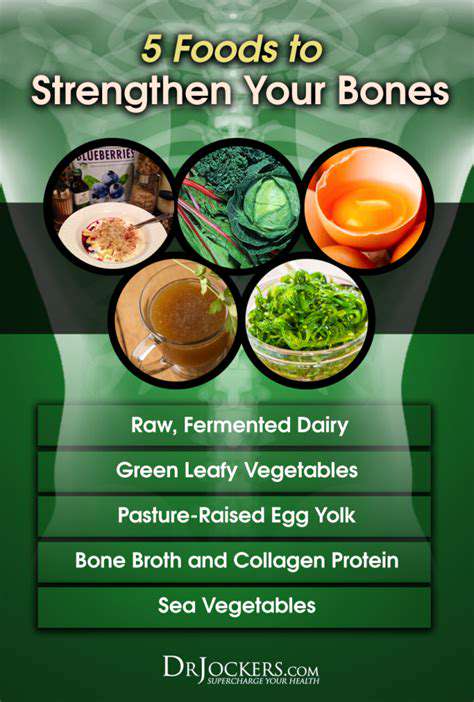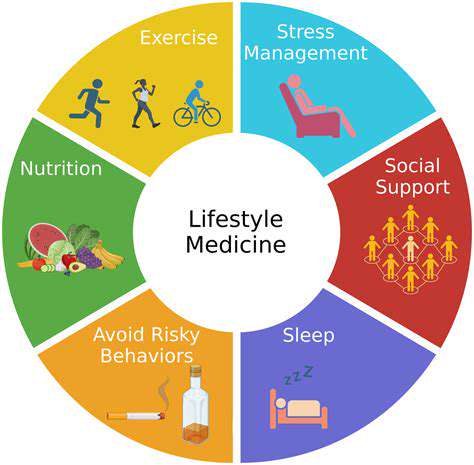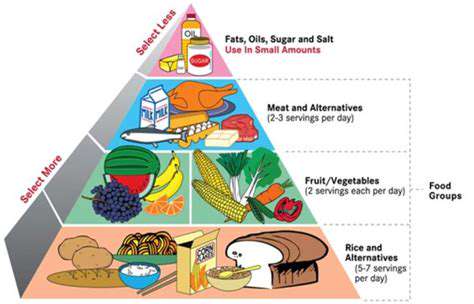
Calcium: The Foundation of Strong Bones
When it comes to maintaining robust skeletal health, calcium stands out as the most vital mineral. This essential nutrient serves as the primary building block of bone tissue, creating the sturdy framework that supports our entire body structure. Insufficient calcium consumption can lead to fragile bones that fracture easily, particularly in later years. Excellent dietary calcium sources include dairy items such as cheese and kefir, dark leafy greens, and calcium-fortified products. Interestingly, the body's ability to absorb calcium depends heavily on adequate vitamin D levels, demonstrating how interconnected these nutrients are for optimal bone health.
Ensuring proper calcium intake throughout one's lifetime proves critical for preventing osteoporosis and similar bone disorders. This becomes especially crucial during growth spurts in youth and during the natural bone density reduction that occurs with aging.
Vitamin D: The Calcium Facilitator
This sunshine vitamin plays an indispensable role in calcium metabolism, working hand-in-hand with calcium to guarantee bones receive proper nourishment for development and upkeep. Without sufficient vitamin D, the body struggles to properly utilize calcium, making this nutrient an essential counterpart in bone formation. Prime vitamin D sources include salmon and other oily fish, egg yolks, and sensible sun exposure.
Maintaining optimal vitamin D levels is absolutely critical for preventing bone deterioration and preserving overall skeletal integrity. Proper vitamin D intake becomes particularly vital during childhood and teenage years to ensure proper bone growth and stave off conditions like rickets.
Phosphorus: A Key Partner in Bone Structure
Working in tandem with calcium, phosphorus serves as another fundamental element of bone composition and contributes significantly to the mineralization process. It participates in creating hydroxyapatite, the mineral complex that gives bone its strength and durability. Protein-rich foods like chicken, lentils, cheese, and seafood all provide excellent phosphorus sources.
Magnesium: The Supporting Cast Member
Though often overshadowed by calcium, magnesium serves as an equally important mineral for skeletal health. It participates in numerous biochemical processes essential for proper bone formation and maintenance. Additionally, magnesium helps regulate calcium balance within the body, further supporting healthy bone architecture. Almonds, pumpkin seeds, spinach, and brown rice all make excellent magnesium sources.
Vitamin K: For Enhanced Bone Density
This fat-soluble vitamin plays a pivotal role in bone metabolism by facilitating the production of proteins crucial for proper bone mineralization. Essentially, vitamin K helps reinforce bone structure, decreasing fracture susceptibility. Dark leafy vegetables like Swiss chard and collard greens stand out as superb vitamin K sources.
Sufficient vitamin K consumption can make a substantial difference in developing resilient bones and minimizing bone-related issues. This proves especially important for osteoporosis-prone individuals or those experiencing significant bone growth phases.
Protein: The Building Block of Bone Matrix
As the fundamental structural component of all body tissues including bones, protein plays an indispensable role in skeletal health. Collagen, the primary protein in bone matrix, provides the scaffolding for bone tissue formation. Excellent protein sources include lean beef, lentils, eggs, and dairy products. Maintaining adequate protein intake proves essential for preserving bone density and reducing fracture risk, particularly in older adults.
Successful businesses begin by developing a deep comprehension of their ideal customers. Recognizing customer frustrations, desires, and behaviors forms the bedrock of product development and service delivery. Comprehensive market analysis techniques - including focus groups, observational studies, and competitive benchmarking - yield actionable intelligence about customer profiles. These insights should permeate all business functions from innovation pipelines to go-to-market strategies.
Tailoring Your Diet to Your Lifestyle and Activity Level

Understanding Your Unique Needs
Personalized nutrition represents the cornerstone of optimal health. Variables such as life stage, physical activity patterns, and pre-existing health concerns dramatically influence nutritional needs. Accounting for these individualized factors enables creation of dietary plans that precisely match personal requirements and objectives.
For instance, nutritional demands differ substantially between a physically active teenager and an elderly individual with limited mobility and chronic health conditions. Recognizing these distinctions proves vital for developing eating patterns that support lifelong health.
Assessing Your Current Lifestyle
Thorough evaluation of existing lifestyle patterns provides the foundation for crafting practical, sustainable dietary changes. This encompasses analysis of daily schedules, occupational demands, social engagements, and any dietary limitations or preferences. Analyzing current consumption patterns and pinpointing improvement opportunities facilitates development of realistic dietary modifications that integrate smoothly into everyday life.
Detailed understanding of portion sizes, food selection habits, and overall eating behaviors enables creation of nutrition plans that align with personal circumstances.
Identifying Your Dietary Goals
Establishing clear, achievable dietary objectives forms the bedrock of successful nutrition planning. Whether targeting weight management, muscle development, enhanced vitality, or general wellness, goals should adhere to SMART criteria - Specific, Measurable, Achievable, Relevant, and Time-bound. This structured approach ensures dietary strategies effectively address individual priorities and aspirations.
Definitive targets, such as reducing body weight by 2 pounds monthly, maintain motivation and facilitate progress tracking. These measurable benchmarks help sustain focus on long-term health benefits.
Incorporating Essential Nutrients
Optimal nutrition requires balanced consumption of vital nutrients including micronutrients, minerals, and phytonutrients. These compounds support physiological processes, bolster immune defenses, and help prevent degenerative diseases.
Understanding nutrient functions and dietary sources enables informed food choices that promote balanced nutrition.
Prioritizing nutrient-dense foods guarantees adequate provision of essential compounds required for peak physiological function.
Managing Portion Sizes Effectively
Appropriate portion control represents a fundamental component of dietary success. Excessive food intake, regardless of nutritional quality, frequently contributes to unhealthy weight gain and associated metabolic disturbances. Implementing practical portion management techniques supports weight maintenance and prevents potential health complications.
Considering Food Allergies and Intolerances
Acknowledging and accommodating food sensitivities remains paramount for nutritional well-being. These reactions can range from mild digestive discomfort to severe systemic responses. Recognizing individual food tolerances proves essential for preventing adverse reactions and maintaining optimal health status.
Thoughtful consideration of these factors helps ensure dietary choices promote both physical health and overall quality of life.
Staying Consistent and Adapting to Changes
Sustained commitment to dietary modifications proves essential for achieving lasting results. Successful nutrition changes require dedication and the ability to navigate occasional challenges.
Maintaining flexibility and adjusting strategies when faced with changing circumstances represents a crucial skill for long-term dietary success. Sustaining motivation and modifying approaches as needed constitute key elements of effective nutrition management.











